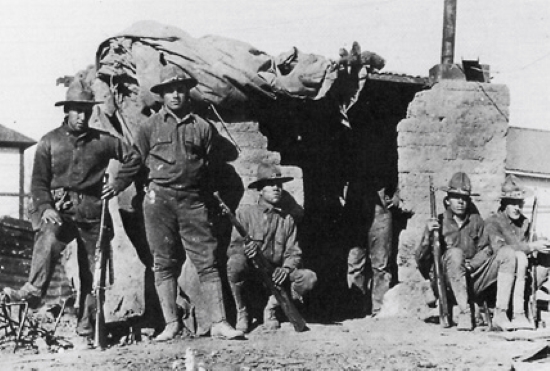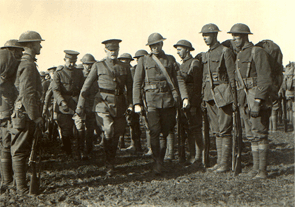
On May 9, 1916, as a result of raids on American Border towns by the Mexican Revolutionary Pancho Villa, the First Arizona Infantry was called into Federal service, serving as part of U.S. Forces stationed on the Mexican Border under the command of General John J. Pershing. Designated the 158th Infantry Regiment on August 3, 1917, the regiment served in France during WW I as part of the 40th Infantry Division. While in France, the 158th was selected as the Honor Guard for President Woodrow Wilson during the Paris Peace Conference. The Regimental Band was also designated as the President's Honor Band.


